Your Complete Guide to Makeup Brushes
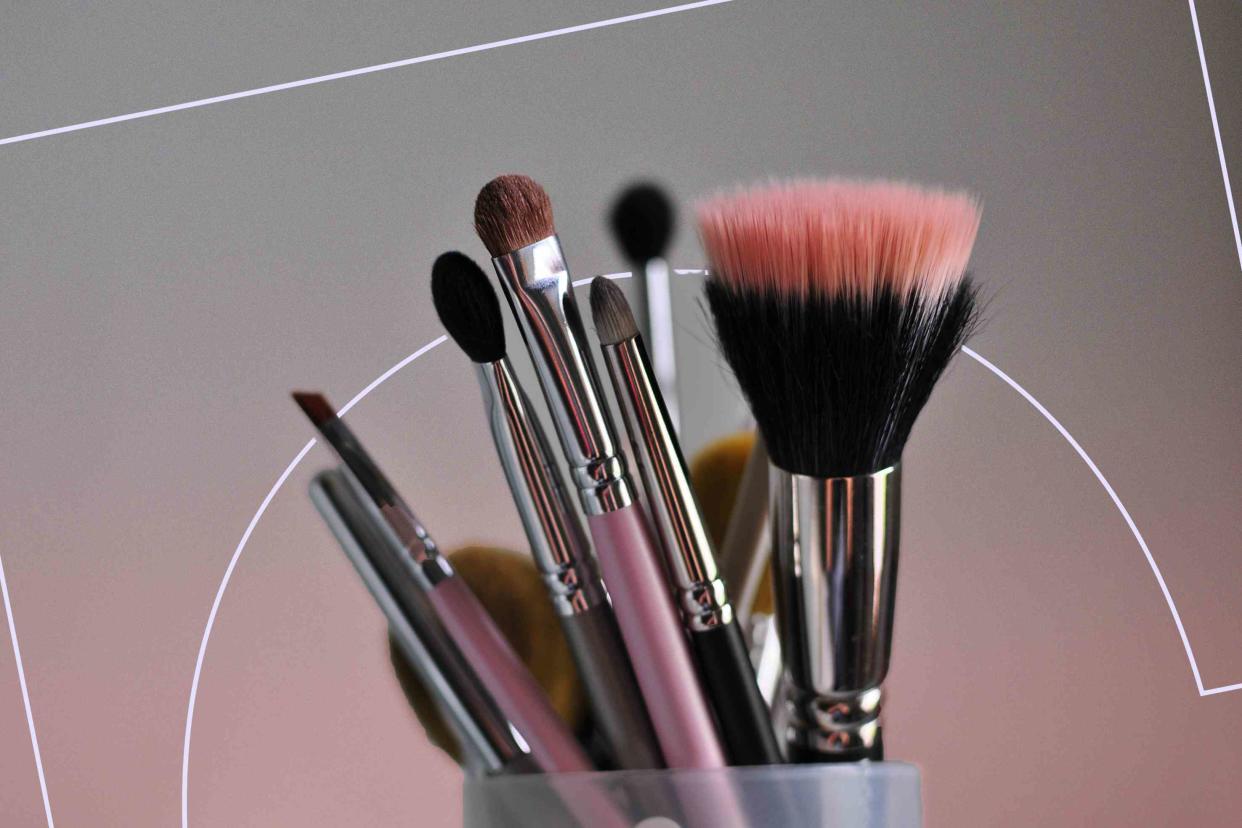
Getty Images/ InStyle
Makeup and math don't seem like they go hand in hand, but achieving any look requires solving an equation: one half is finding the perfect product formulas and shades and the other half is using the right brushes to apply them.
While choosing the right products is important, applying each one with a makeup brush that's specifically designed for it is the key to getting your desired finish. So, if you've ever applied full-coverage foundation and got a streaky, blotchy finish, the brush you used could be to blame. The same goes for not being able to draw a precise cat eye.
"Makeup brushes can drastically affect the outcome of your final makeup look. Therefore, choosing the correct brush for the desired result you’re looking for is so important," confirms Sephora Beauty Director David Razzano. "A dense brush with shorter bristles can help create a heavier coverage to your foundation, whereas a looser fluffy foundation brush can softly sweep the product on in lighter layers. This same concept applies to all brushes and the products you’re using."
However, knowing which brush to pair with which product is easier said than done because there are so many available options. That's why we turned to top makeup artists to break down what every makeup brush does, along with their pro tips on how to use them.
Keep reading for a comprehensive guide to the most popular types of makeup brushes.
:
Foundation Brush

Courtesy
"A foundation brush is essential for evenly applying foundation and smoothing/blending edges of the makeup seamlessly into your neck, so there are no visible lines of demarcation," says Nick Lujan, Director of Artistry & Education, Kevyn Aucoin Beauty.
Lujan recommends a brush made with synthetic fibers because they excel at blending cream, liquid, and powder foundation formulations. While this Omina brush is technically a blush brush, it's a favorite of Lujan's because it's the perfect shape and density for applying base products.
Concealer Brush

Courtesy
:
The concealer brush you use will depend on where you're applying it. For the under eye area, Razzano recommends a brush with one side that is rounded and one side that is tapered (like a the shape of a finger pad). "This is ideal for blending the concealer into the under-eye area for a clean polished effect," he says. "The flip side of the brush is flat and can be used to strategically apply concealer into the small curvatures of the facial features."
For blemishes, opt for a brush that has a small, flat shape like Westman Atelier's Clean Foundation and Spot Check Brush. "This brush will allow you to control the application of a concealer directly onto any blemishes or skin concerns without covering up the surrounding skin as well," Razzano says.
Blush Brush

Courtesy
"A good blush brush will have a round shape with a domed tip to cradle the cheekbones," Lujan says. "I love using powder brushes interchangeably to apply powder blush and other powder color products." If the brush is dense enough, it can also be used to apply cream formulas.
Alternatively, an angled duo-fiber brush is also great for applying both blush and bronzer. "This gives softer washes of color and is great for hugging the hairline and apples of the cheek," Lujan explains.
Bronzer Brush

Courtesy
A bronzer brush is larger than one you'd use for contouring so that it can be used for quick, even application all over the face. "I prefer a bronzer brush with longer bristles — like Sephora Collection Pro Bronzer Brush #80 —if I’m using a powder formula as it will deposit the product in soft layers throughout the face. Plus, it has a tapered tip, so you can use with bronzer for a soft sculpt as well," Razzano says.
Powder Brush
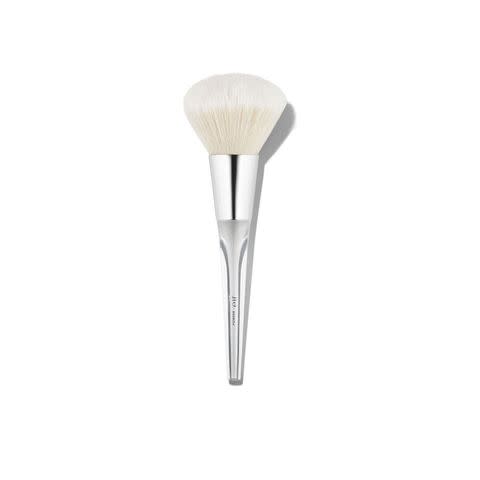
Courtesy
A powder brush is a thicker, fuller brush that's usually made of synthetic fibers. It's used to set makeup or apply bronzer. "It can also help to blend out any heavy applications of blush or contour," says Sasha Ghodstinat, Global Makeup Artist & Brand Trainer, Code8.
The E.L.F. Cosmetics Precision Powder Brush is a full, fluffy brush that works well with both pressed and loose powder products.
Stippling Brush

Courtesy
A strippling brush makes it simple to achieve a smooth, streak-free finish with your cream/liquid foundation and other complexion products like blush and contour. "A stippling brush uses a dense bristle core with a longer layer of bristles that are scattered above," Razzano shares. "This creates an application of stippled dots with your product, which are then buffed in with the dense core."
Refy's Duo Face Brush has a larger end that's perfect for applying foundation, while the other end has a small, dense brush that's helpful for applying product to precise areas of the face.
Contour Brush

Courtesy
"A contour brush is a medium-sized brushed that is more angled and is used for powder or liquid products that sculpt and enhance your face," Ghodstinat explains.
Urban Decay's UD Pro Contour Definition Brush has angled bristles that are designed to hug the hollows of the cheek — one of the areas where you'd typically apply a contour product to sculpt the face.
Kabuki Brush

Courtesy
"The kabuki brush originated with Japanese theater makeup," Razzano says. "The short handle, dense bristle brush, was perfect for buffing in the traditional white rice makeup over the face seamlessly."
Today, the brush is used to smooth cream, liquid, or powder products onto the skin. If you like (almost) effortless makeup application, Razzano recommends Fenty Beauty's Face & Body Kabuki Brush to "apply your foundation, bronzer and highlighter on both face and your body."
Duo Fiber Brush

Courtesy
"This brush is identified by its use of two fibers, usually in different colors. Typically, these are synthetic bristles and are great for liquids and creams," Razzano explains. "The duo fibers tend to pick up less product, so you apply by creating layers that end up having a flawless airbrushed finish."
The bareMinerals Smoothing Foundation Brush is one standout duo fiber brush to add to your personal kit.
Flat Eyeshadow Brush
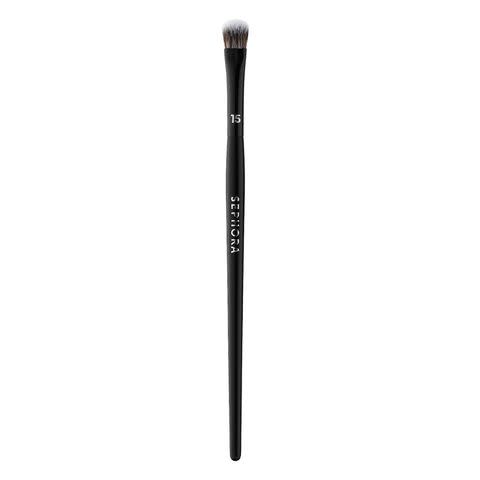
Courtesy
A flat eyeshadow brush is a great addition to any kit as it allows you to pack on eyeshadow with minimal fallout. "This technique will allow you to achieve the full richness of the eyeshadow as well," Razzano shares. "Then, using the side of the brush, you can softly blend it out."
The makeup artist is a fan of the Sephora Collection Pro Shadow Brush #15 as you can create an entire eye look with it. "The smaller size allows for more controlled detailed application, and the synthetic bristles mean I can use this brush for powder shadows as well as cream and liquid," Razzano says.
Eyeshadow Crease Brush

Courtesy
"Its fuller bristles are wonderful for creating the crease shadow in the eye socket. The shape allows the brush to snuggle into the socket and with a back and forth sweeping motion it will apply and blend out the eyeshadow you’re using," Razzano says of the fluffy crease brush.
The makeup artist recommends keeping a clean crease brush on hand to blend out the edges of any eye look because it will create a "professional look."
Angled Eyeliner Brush

Courtesy
Eyeliner brushes aren't one size fits all. Lujan says there are different types that are designed for achieving different looks (like angled, domed smudges, and pointed. "Angled Brushes are my personal favorite," the makeup artist shares. "You can create a thin to thick line with this shape. This allows for liner liner application and eyebrow application."
Eye Smudger Brush

Courtesy
This brush is small, densely packed, and shaped like a bullet. "These are designed to move product for a smudged effect," Lujan says. "This is the perfect tool for creating smoky liner looks." The makeup artist suggests applying an eyeliner pencil around the perimeter of the eye, then using the brush to smudge and stretch it out for a smoky effect .
Pointed Eyeliner Brush
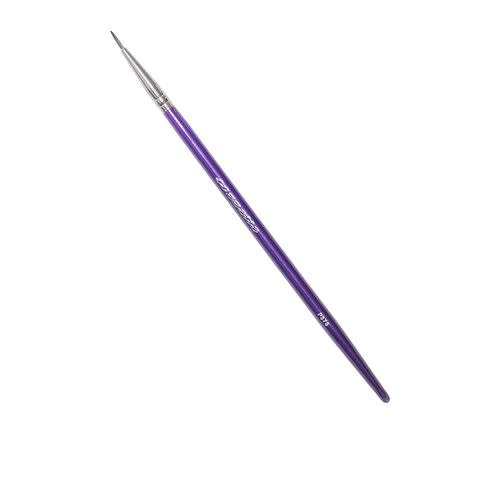
Courtesy
While pointed eyeliner brushes come in a range of sizes, Lujan recommends using the thinnest and smallest size. "This shape is great for line work," Lujan says. "You can glide liquid liner on with precision and the sharpest results with a small, pointed brush."
Brow Brush

Courtesy
There are two types of brow brushes: angled and spoolie. Instead of having to invest in both types of brushes, many brands combine them by creating dual-ended tools.
"The spoolie brush is for styling brow hair and combing product through the hair, Lujan explains. "The angled brush is designed for depositing color (powder, gel, or cream) to the root of the brow hairs and also stretching it out toward the tail of the brow." This Omnia brow brush is a favorite of Lujan's as the bristles on the angled end are coarser and thicker, which helps to distribute the product all the way through the brow hair to the skin.
Lip Brush
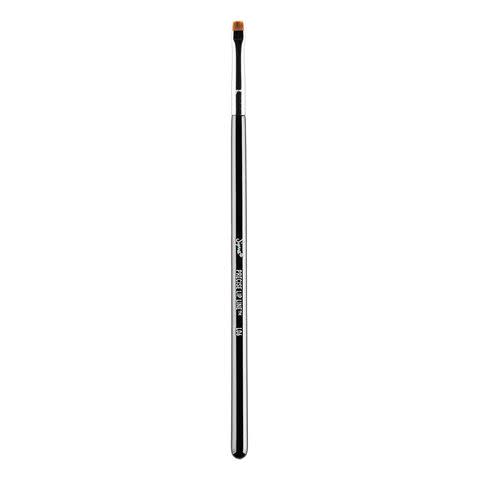
Courtesy
If you think lips brushes look similar to some eyeshadow ones, you're on to something. "Lip brushes have similar functions to eyeliner brushes," Ghodstinat confirms. "They are normally slim and pointy and help you create more contour to the lips and apply your lipstick more evenly."
Makeup Sponge
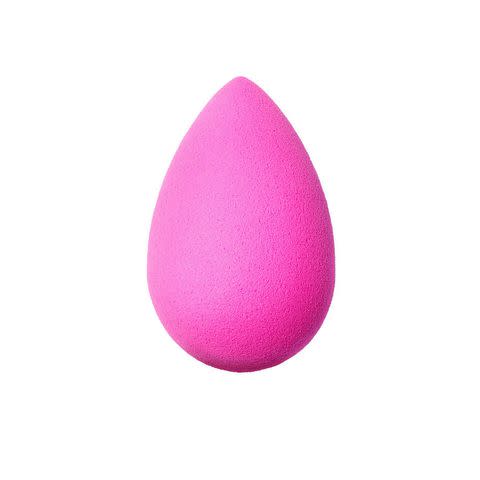
Courtesy
Sure, it's not technically a brush, but makeup sponges like the Beautyblender perform similar functions to complexion tools. The sponge can be used to seamlessly blend liquid and cream foundation, concealer, blush, bronzer, and contour by tapping it over the area of the face you're working on. Just don't forget to dampen it first.


